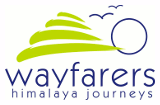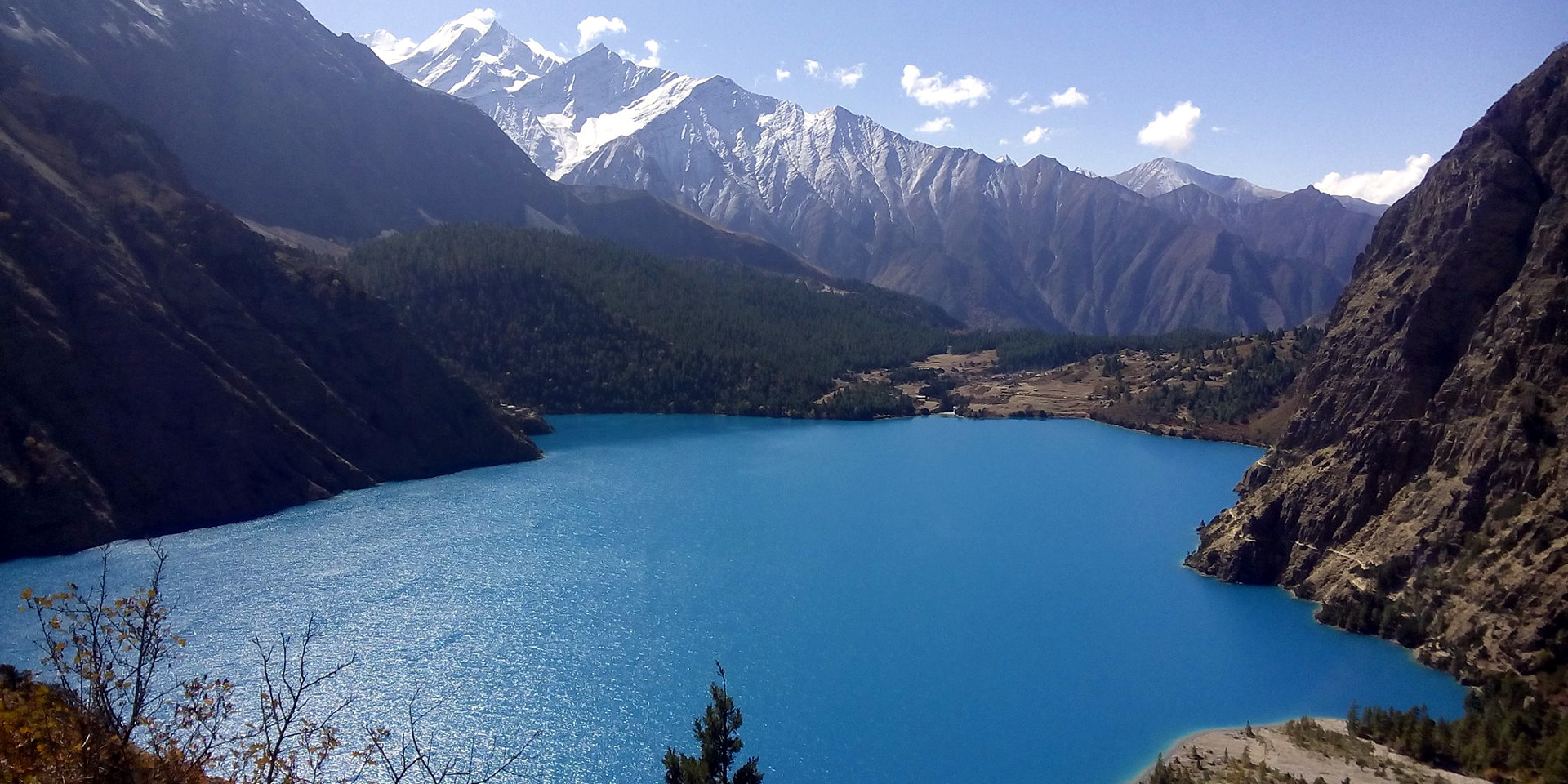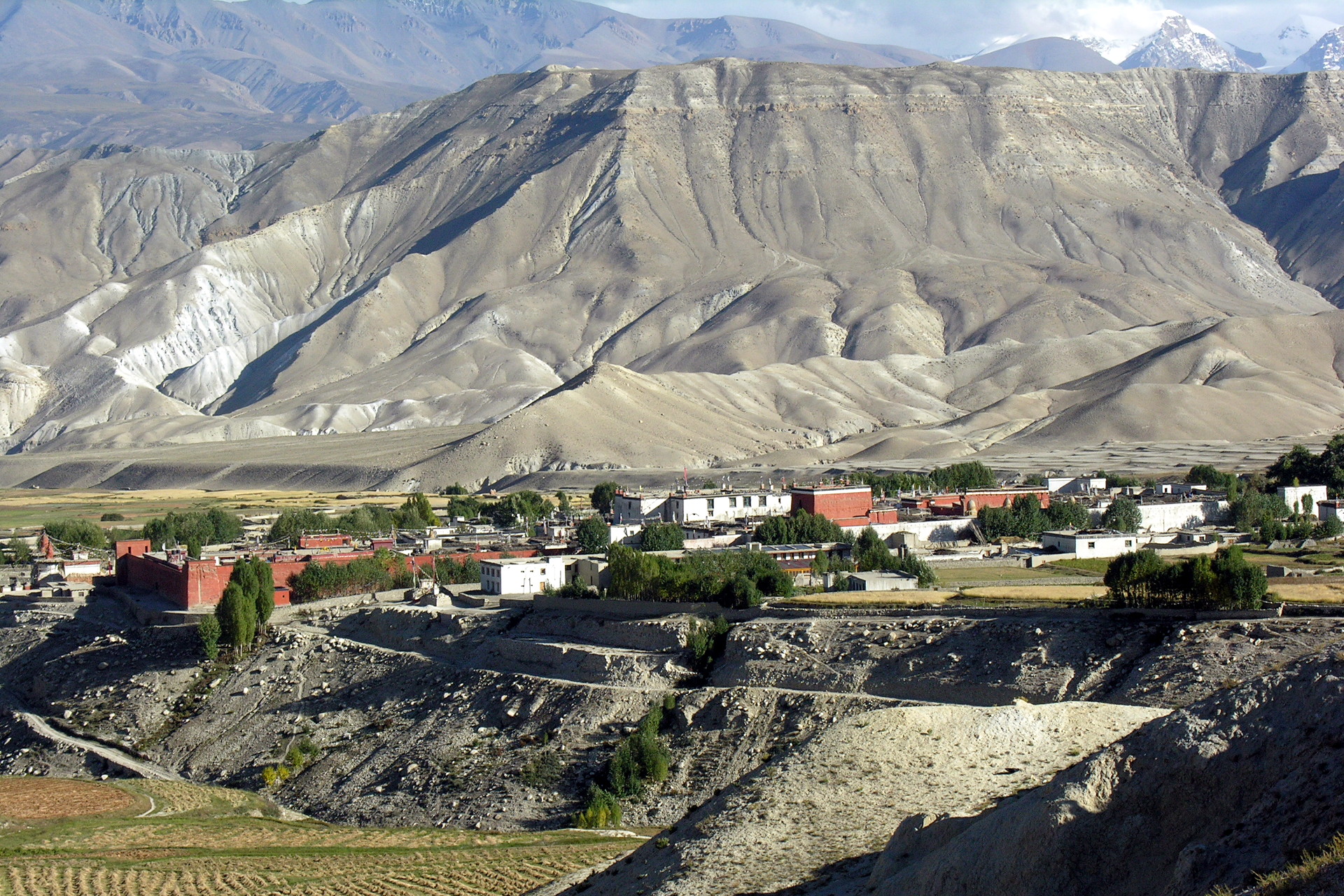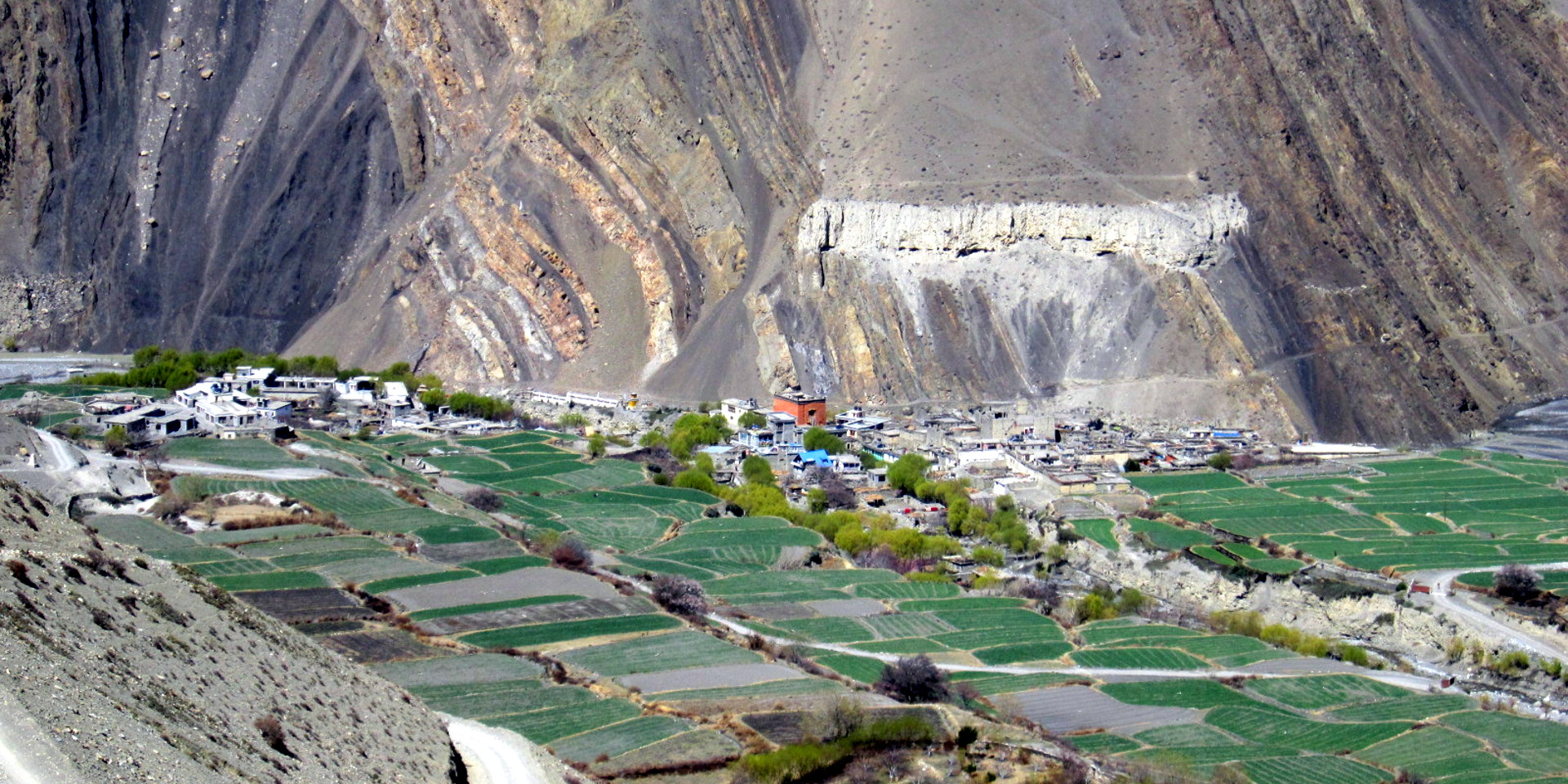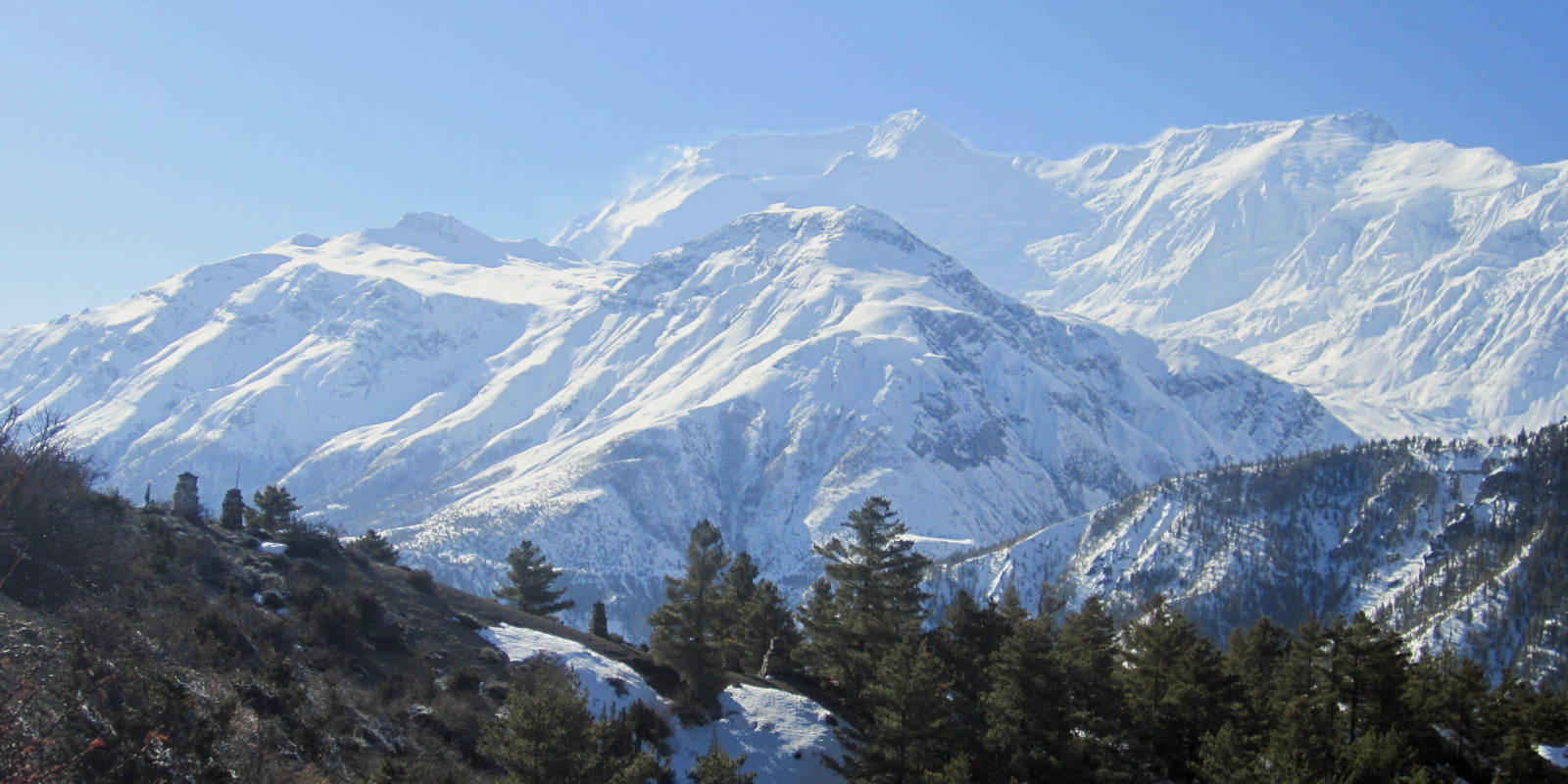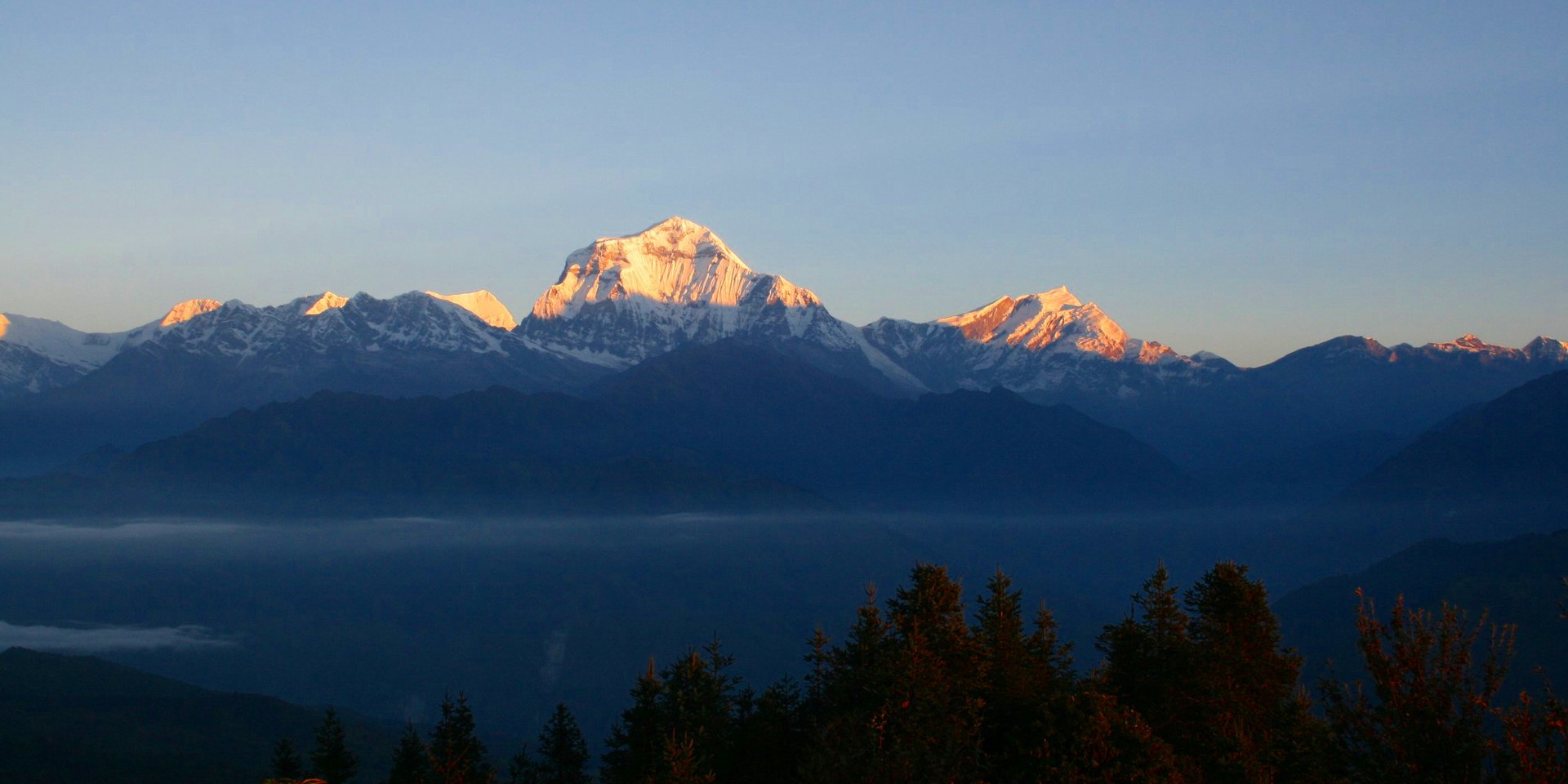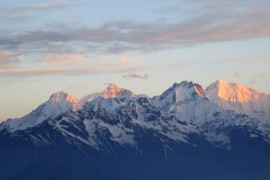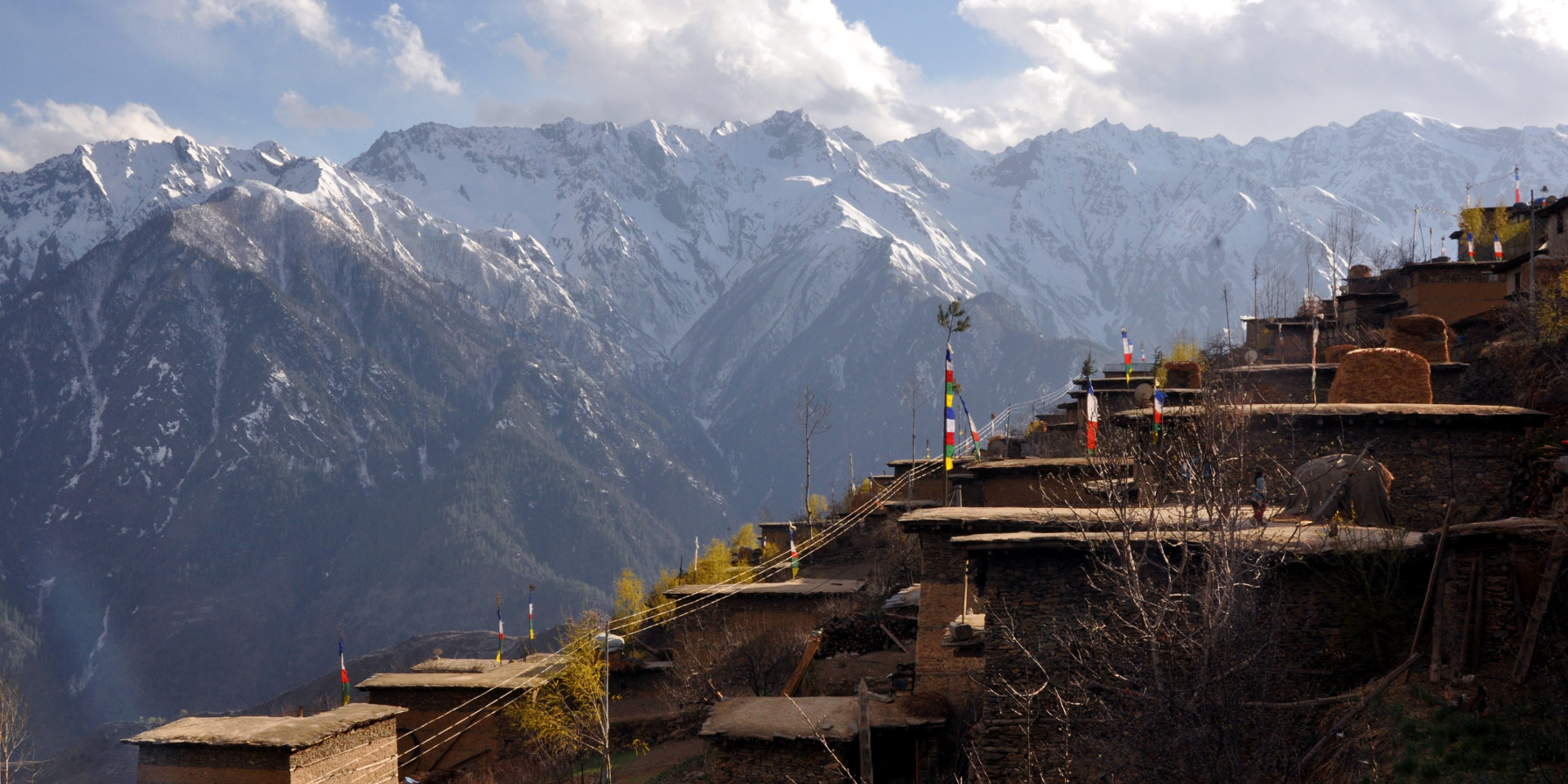
18 days – The essence of this magical land in a two-week rigorous trek
-
15 days demanding trekking in the middle hills/ high Himalaya
-
Leisure in Kathmandu
-
Dramatic views of Annapurna, Dhaulagiri, Kanjiroba & Sisne Himal, Phoksundo Lake
-
Plentiful cultural encounters with the Dolpalis and other ethnic peoples of the middle hills
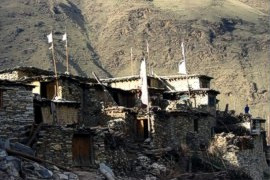 Probably the best moderate-length wilderness and culture trek in the Nepal Himalaya, this takes the approach from Jumla across the Kagmara La pass to the Phoksundo lake. Starting with a flight to Jumla, we trek up through the Tila Khola valley, passing Hindu Indo-Aryan settlements amidst cultivated hillsides. We cross the Buraburi La pass to descend to the Buddhist village of Hurikot. The trail climbs through walnut & oak forests, and we enter the national park at Tojem. From here, Phoksundo Lake is still four days, and the ascent of the Kagmara La takes two days, rewarded at the summit with a dramatic view of the Kanjiroba Himal. We continue up the valley through the Bon-po settlement of Pungmo to Sumdoa, the national park headquarters. Climbing through the rocky terrain and past an awesome waterfall, we are greeted with our first view of the turquoise lake. We spend a day exploring the lake and visiting the Ringmo monastery on the opposite shore. Returning from the lake, we follow valley of the Suli Gad – the stream that drains the lake – through the villages of Shepka, Ankhe, and Rohagaon to Dunai, where the Suli Gad meets the Bheri. We trek the following day to Juphal, from where we take a flight to Nepalganj.
Probably the best moderate-length wilderness and culture trek in the Nepal Himalaya, this takes the approach from Jumla across the Kagmara La pass to the Phoksundo lake. Starting with a flight to Jumla, we trek up through the Tila Khola valley, passing Hindu Indo-Aryan settlements amidst cultivated hillsides. We cross the Buraburi La pass to descend to the Buddhist village of Hurikot. The trail climbs through walnut & oak forests, and we enter the national park at Tojem. From here, Phoksundo Lake is still four days, and the ascent of the Kagmara La takes two days, rewarded at the summit with a dramatic view of the Kanjiroba Himal. We continue up the valley through the Bon-po settlement of Pungmo to Sumdoa, the national park headquarters. Climbing through the rocky terrain and past an awesome waterfall, we are greeted with our first view of the turquoise lake. We spend a day exploring the lake and visiting the Ringmo monastery on the opposite shore. Returning from the lake, we follow valley of the Suli Gad – the stream that drains the lake – through the villages of Shepka, Ankhe, and Rohagaon to Dunai, where the Suli Gad meets the Bheri. We trek the following day to Juphal, from where we take a flight to Nepalganj.Trip Itinerary
Day 1 Arrive Kathmandu.
Days 2-3 Fly Kathmandu – Nepalgunj – Jumla; start trek
We start with a flight to Nepalganj (152m) and onward the following morning to Jumla (2,345m). Meeting the trek crew, this day we trek along the Tila Khola past some Hindu settlements and camp by the river in a beautiful valley.
Days 4-6 Across Buraburi La to Bhaisichaur
We trek up and down through Hindu Aryan and Buddhist settlements, forests and pastures. Staying in Napokuna, a Buddhist village with a gompa and chortens, we cross the Buraburi La pass (4,130m) the following day. At the top of the pass we are enticed by superb panoramas of the Mata Thumpa peak, the Kagmara peaks, the Kagmara & Balangra passes, and the Bheri river valley. We descend to camp amidst fine vistas at Bhaisichaur.
Days 7-10 Across Kagmara La to Shey-Phoksundo
Descending gradually to Hurikot, another Buddhist village, we detour and climb towards the Kagmara lekh. Passing through oak & walnut forests along the confluence of the Jagdula and Garpung Kholas, we enter the national park at Tojem. A day’s steep ascent brings us to the base of the pass. Monkeys and ghorals can be seen along the forested trail, embellished by some fine meadows and waterfalls. We cross the Kagmara La (5,115m), rewarded at the pass summit with a dramatic view of Kanjiroba (6,882m), Kanjeralwa (6,612m), and several other peaks. We descend to camp in a beautiful meadow. Continuing up the valley above the rivulets, we descend to Pungmo, a Bon po village that characterizes its remoteness, with gompas and chortens in the neighborhood. We carry on to Sumdoa, the national park headquarters, situated by the outlet of the lake.
Days 11-12 The Turquoise Lake
We continue northwards gradually climbing over the rocky terrain and past a huge mani wall, stumbling across an awesome waterfall. Climbing a little, we come in sight of the turquoise lake, set in a cleft between steep jagged rockfaces towering above. The village of Ringmo is on the west shore and the gompa is across the lake from where we are. We spend a day exploring and visiting the surroundings.
Days 13-17 Return via Dunai and Juphal
Leaving the lake behind, we follow the trail across the Suli Gad river, the outlet of the lake, descending gradually to Sumdoa. The trail continues along the river valley through the villages of Shepka, Ankhe, and Rohagaon to Dunai, the administrative center of the Dolpo district. The following day we trek to Juphal, from where we take a flight to Nepalganj. From Nepalganj you can proceed to a wildlife safari at Royal Bardia Natlional Park or take the flight back to Kathmandu.
Day 18 Depart for onward destination.
Dates and Pricing
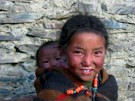 We can operate private departures for groups of four or more from May through September.
We can operate private departures for groups of four or more from May through September. | Standard Hotels | |
| 4 or more persons | US$ Prices will vary with group size; please check with us. |
| Single room supplement | US$ 210 |
| Airfare Kathmandu - Nepalganj - Jumla; Juphal - Nepalganj - Kathmandu | US$ 522 |
|
Cost Information
|
| Standard Hotels | |
| Kathmandu | Nirvana Garden Hotel |
| Nepalganj | Hotel Batika |
